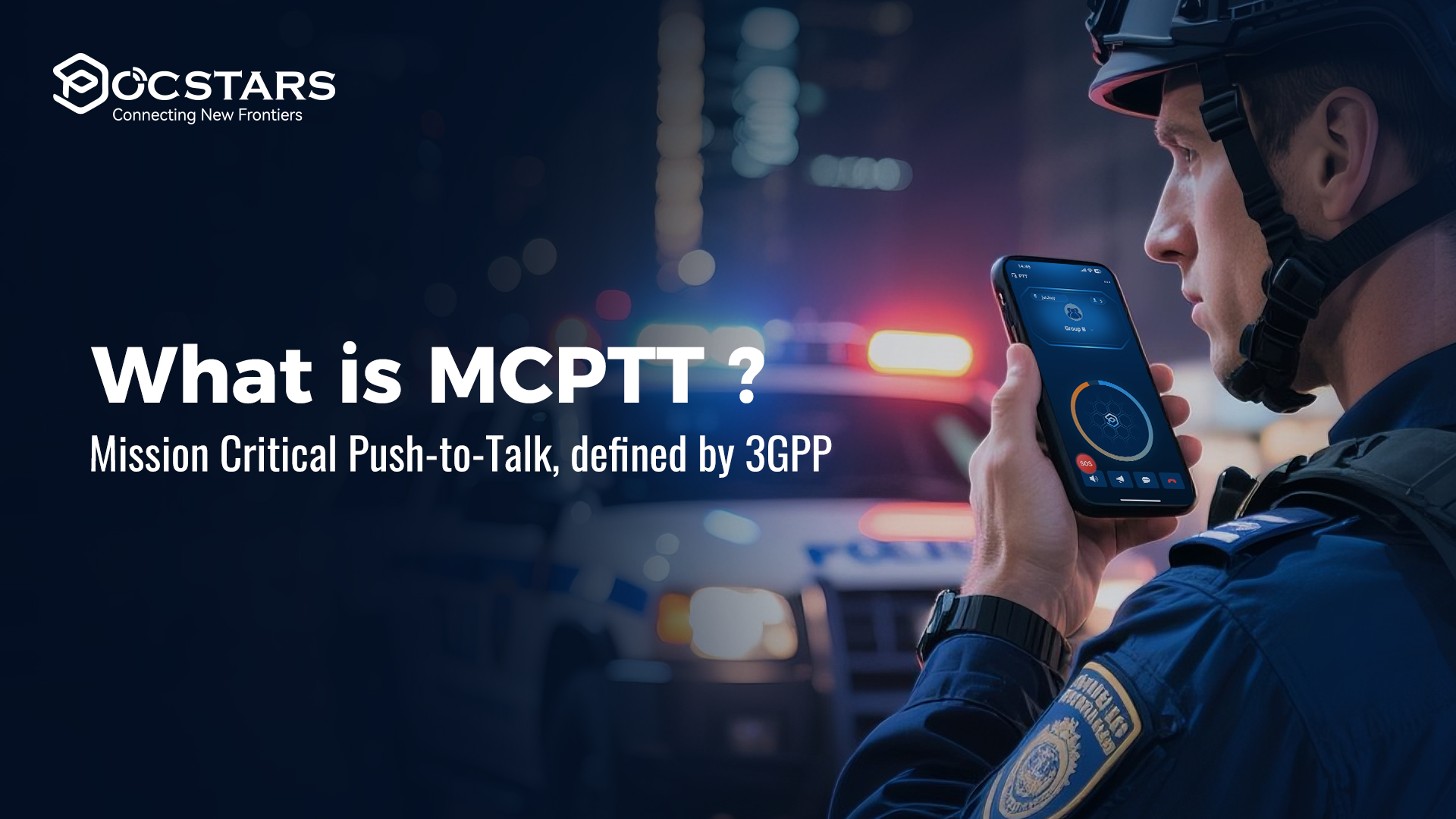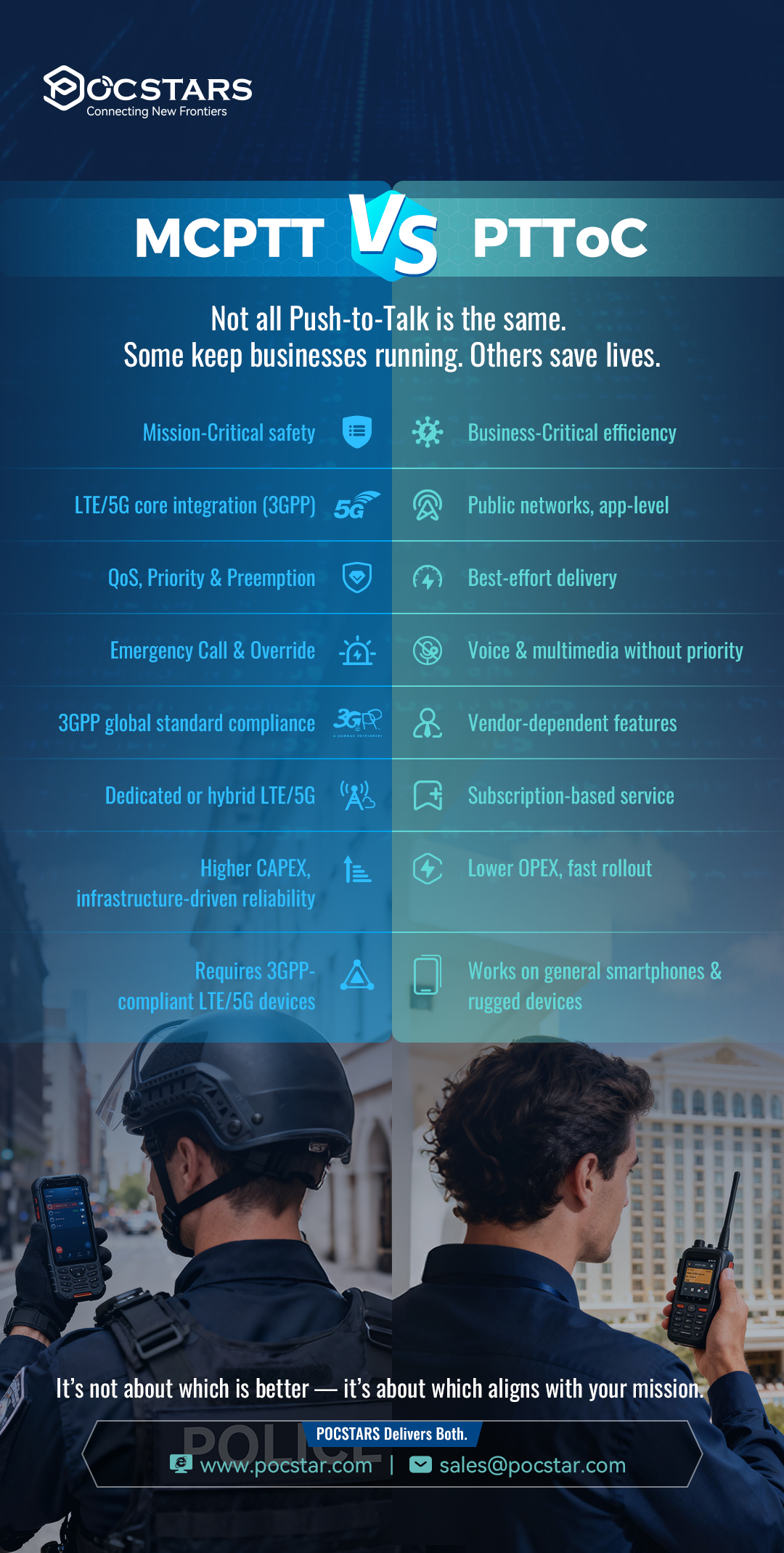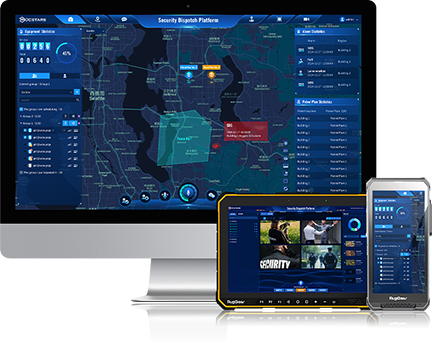MCPTT Explained: What It Is and How It Differs from PTToC

What is MCPTT?
MCPTT stands for Mission Critical Push-to-Talk, a standard defined by 3GPP in Release 13. It was designed to bring land-mobile radio (LMR)-grade reliability to modern LTE/5G broadband networks.
Unlike ordinary commercial PTT apps, MCPTT enables mission-critical features such as:
QoS, Priority & Preemption – ensuring critical calls always go through
Emergency Call & Override – immediate access when seconds matter
Interoperability with LMR systems – bridging legacy radio with broadband
Multi-layered Security – protecting sensitive communications end-to-end
In short: MCPTT is not just “better PTT” — it is mission critical by design.
MCPTT vs PTToC: Two Models, Two Missions
While both deliver Push-to-Talk over broadband, PTToC and MCPTT differ in purpose, technology, cost, and device requirements.
PTToC = Business-Critical
Designed for logistics, security, and enterprise operations, where communication enhances efficiency but occasional interruptions can be tolerated.
MCPTT = Mission-Critical
Defined by 3GPP and built for public safety, emergency response, and defense, where communication reliability is non-negotiable.
Key Differences at a Glance
The infographic below highlights the major distinctions:

Extended Explanation
1. Network Architecture
PTToC: Runs as an application over public LTE/3G/4G/5G networks.
MCPTT: Integrates directly into LTE/5G cores with 3GPP-defined interfaces.
2. Service Quality
PTToC: Best-effort delivery, subject to congestion.
MCPTT: Guaranteed QoS, with priority and preemption during emergencies.
3. Features
PTToC: Supports group/individual voice and basic multimedia, but without priority control.
MCPTT: Adds mission-critical functions such as Emergency Call, Override, and evolution to MCVideo/MCData.
4. Standards
PTToC: Feature set varies by vendor.
MCPTT: Fully aligned with 3GPP global standards.
5. Deployment & Cost Models
PTToC: Subscription-based, OPEX-driven, rapid rollout, lower per-user cost.
MCPTT: Requires dedicated or hybrid LTE/5G, higher upfront CAPEX, infrastructure-driven reliability.
6. Device Requirements
PTToC: Works on general-purpose smartphones and rugged devices.
MCPTT: Needs 3GPP-compliant LTE/5G terminals to activate QoS, emergency call, and priority features.
Conclusion
Both PTToC and MCPTT are essential — but for very different missions.
PTToC empowers enterprises with flexibility, speed, and cost efficiency.
MCPTT ensures mission-critical safety with reliability, priority, and standardization.
At POCSTARS, we deliver both PTToC and MCPTT solutions on dedicated platforms — ensuring efficiency for enterprises and reliability for mission-critical agencies.
For further details, visit www.pocstar.com. For business inquiries, contact us at sales@pocstar.com.













